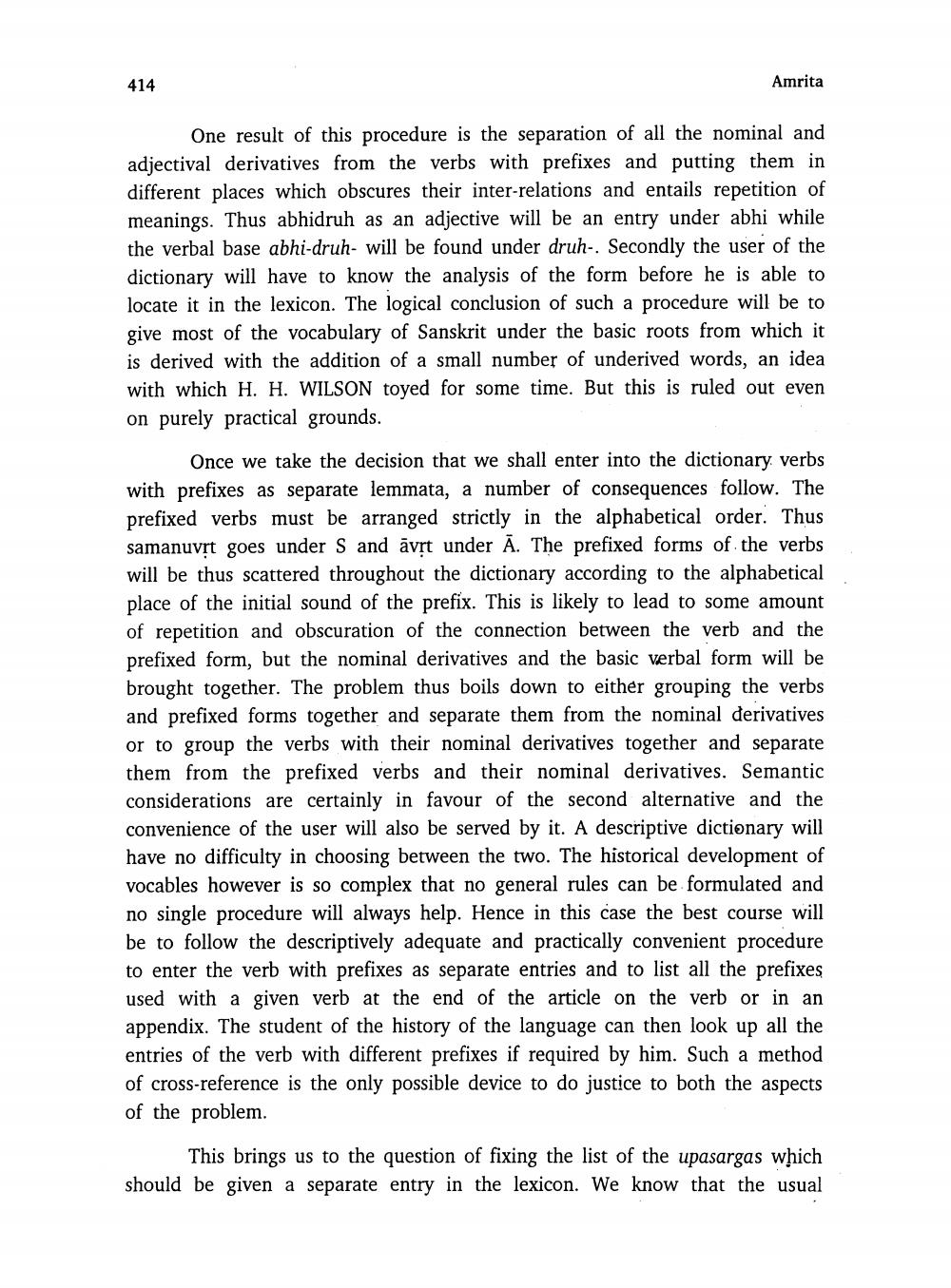________________
414
Amrita
One result of this procedure is the separation of all the nominal and adjectival derivatives from the verbs with prefixes and putting them in different places which obscures their inter-relations and entails repetition of meanings. Thus abhidruh as an adjective will be an entry under abhi while the verbal base abhi-druh- will be found under druh-. Secondly the user of the dictionary will have to know the analysis of the form before he is able to locate it in the lexicon. The logical conclusion of such a procedure will be to give most of the vocabulary of Sanskrit under the basic roots from which it is derived with the addition of a small number of underived words, an idea with which H. H. WILSON toyed for some time. But this is ruled out even on purely practical grounds.
Once we take the decision that we shall enter into the dictionary verbs with prefixes as separate lemmata, a number of consequences follow. The prefixed verbs must be arranged strictly in the alphabetical order. Thus samanuvrt goes under S and ävrt under Ā. The prefixed forms of the verbs will be thus scattered throughout the dictionary according to the alphabetical place of the initial sound of the prefix. This is likely to lead to some amount of repetition and obscuration of the connection between the verb and the prefixed form, but the nominal derivatives and the basic verbal form will be brought together. The problem thus boils down to either grouping the verbs and prefixed forms together and separate them from the nominal derivatives or to group the verbs with their nominal derivatives together and separate them from the prefixed verbs and their nominal derivatives. Semantic considerations are certainly in favour of the second alternative and the convenience of the user will also be served by it. A descriptive dictionary will have no difficulty in choosing between the two. The historical development of vocables however is so complex that no general rules can be formulated and no single procedure will always help. Hence in this case the best course will be to follow the descriptively adequate and practically convenient procedure to enter the verb with prefixes as separate entries and to list all the prefixes used with a given verb at the end of the article on the verb or in an appendix. The student of the history of the language can then look up all the entries of the verb with different prefixes if required by him. Such a method of cross-reference is the only possible device to do justice to both the aspects of the problem.
This brings us to the question of fixing the list of the upasargas which should be given a separate entry in the lexicon. We know that the usual




